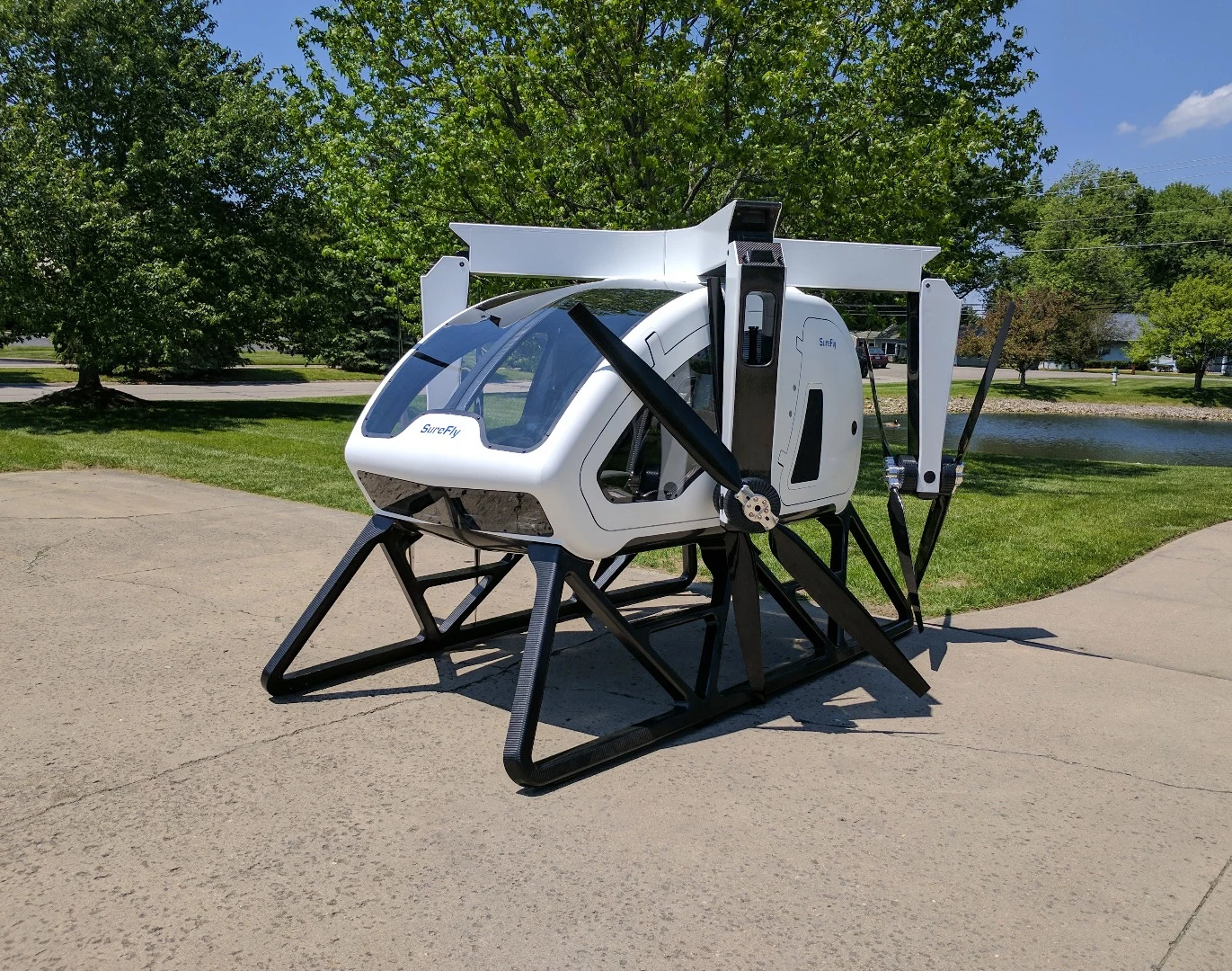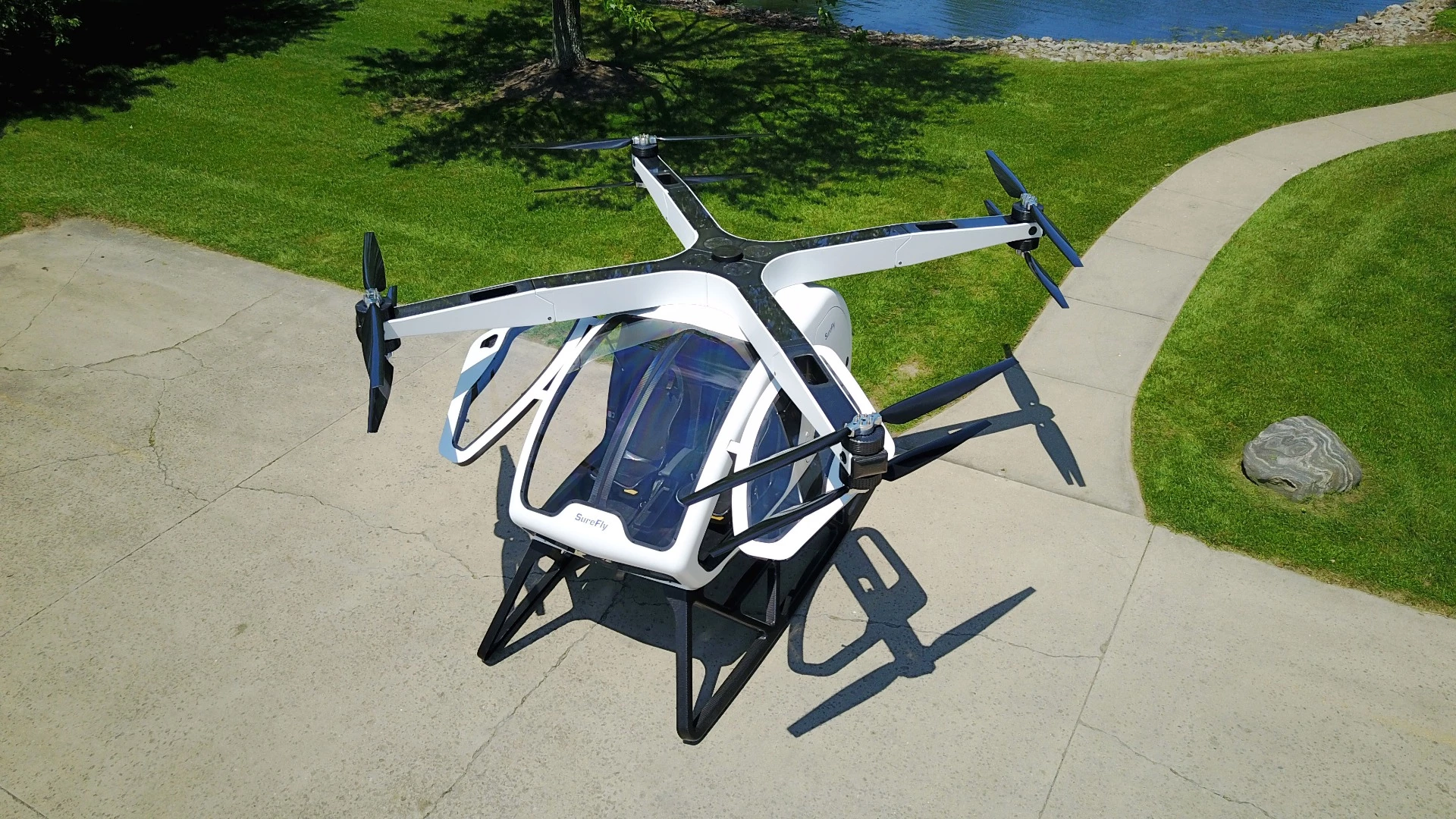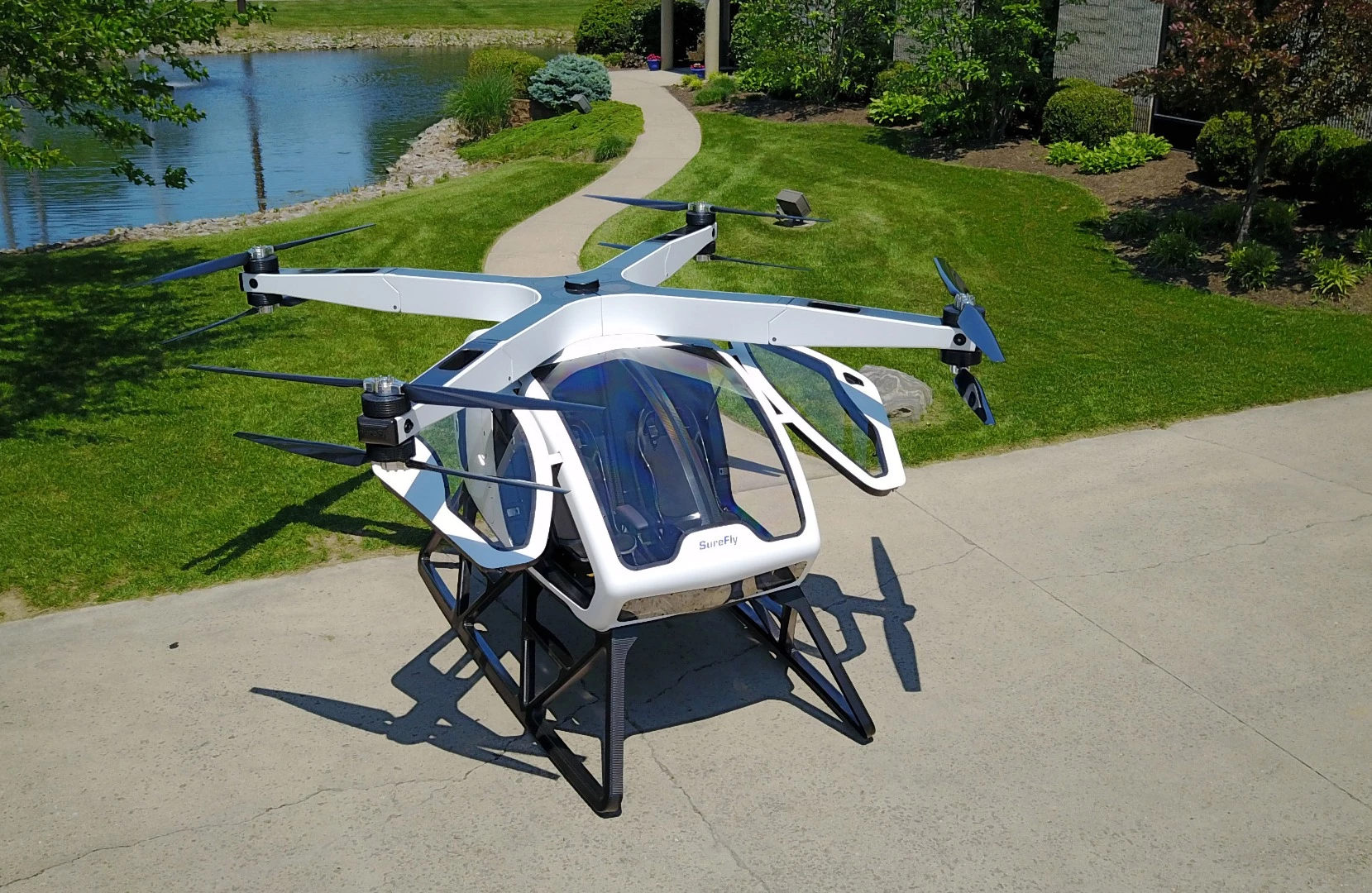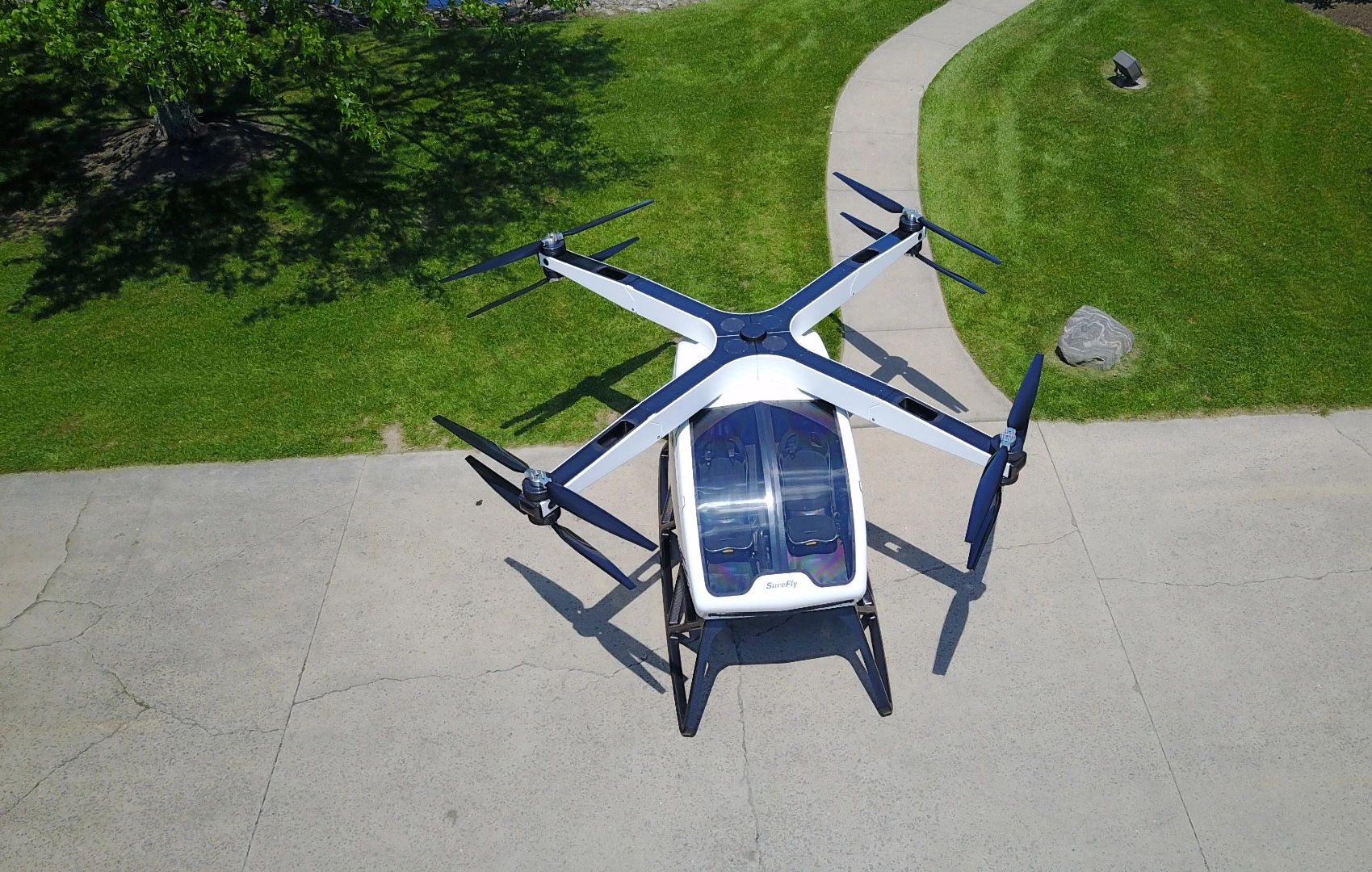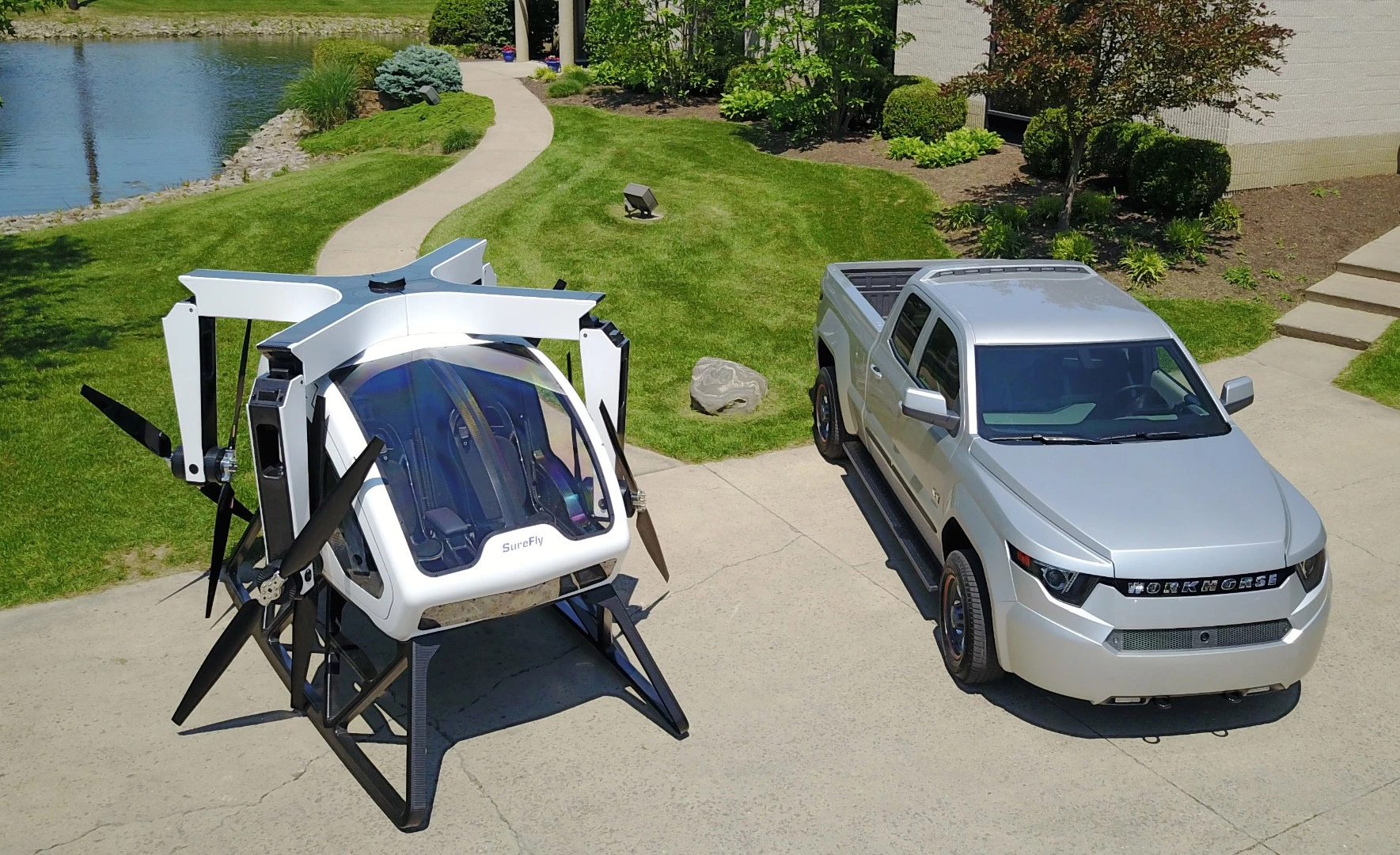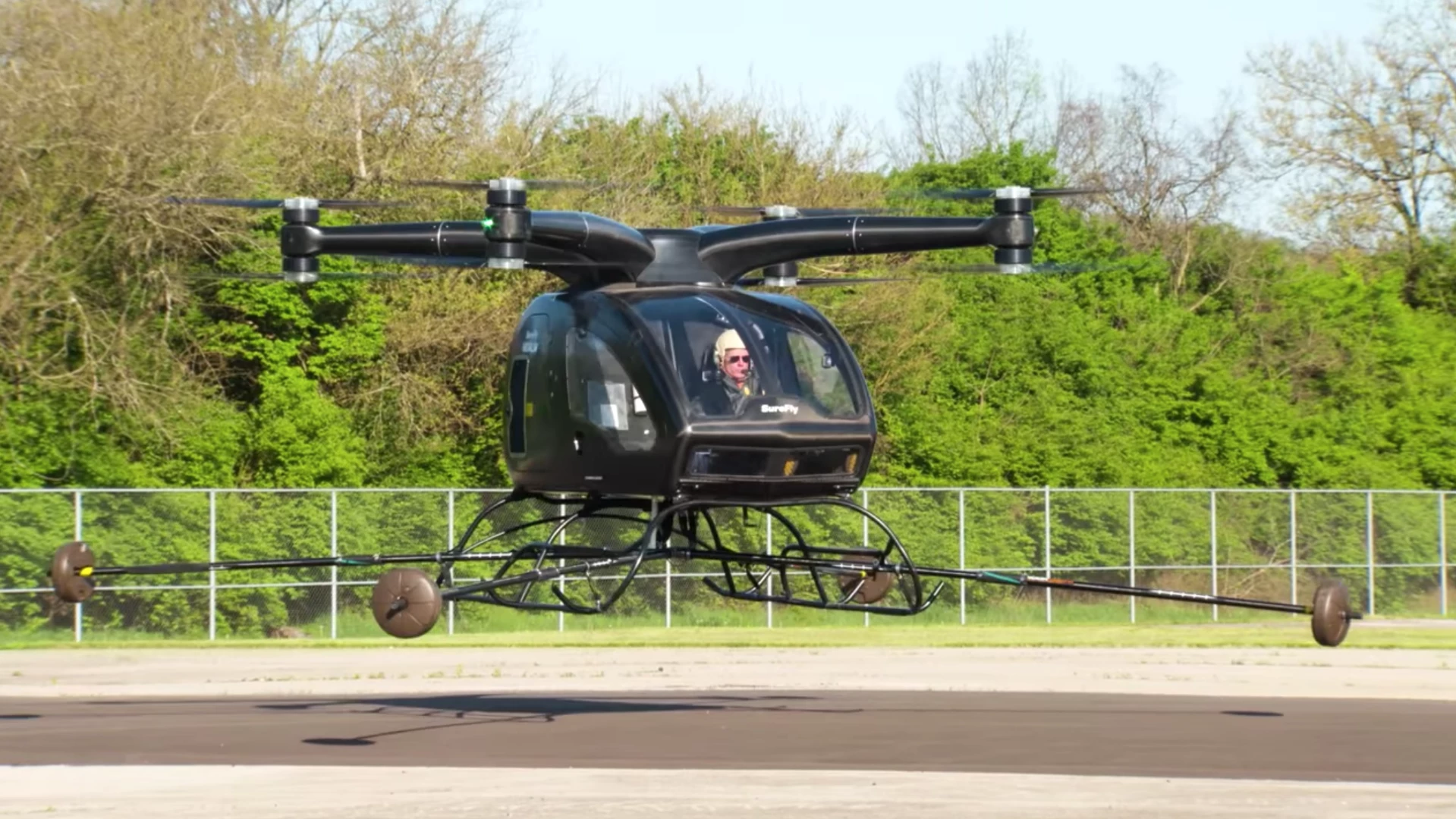The flying taxi scene is now a bustling place, but some are moving faster than others. Where some startups have taken years to move past the prototype stage, others are launching right into things. Workhorse first unveiled its Surefly flying car at the Paris Air Show in June last year, and has now sent it into the air with a person inside for the first time.
Workhorse has a number of electric vehicles under development, including electric pickup trucks and delivery vans that launch drones from the roof to cover the last leg. The Surefly has to be the most ambitious, however, designed to use a mix of diesel and electricity to power eight contra-rotating propellors and carry up to 400 lb (180 kg) over a range of approximately 70 mi ( 112 km).
Back in January, it received an Experimental Airworthiness Certificate from the Federal Aviation Administration, which enabled it to carry out controlled test flights in the US. The company had expected to carry out its first ever manned flights as part of a demonstration at CES that month, but those plans were foiled by some mild drizzle that posed a threat to the prototype aircraft's electrical systems.

There were no such obstacles as the Surefly lifted off outside of Cincinnati recently, with Chief Operating Officer John Graber at the controls. The video, it has to be said, is a little underwhelming, with the aircraft only hovering a foot or so above the ground. But in the field of aviation a first manned flight is certainly a noteworthy milestone. Check it out below.


